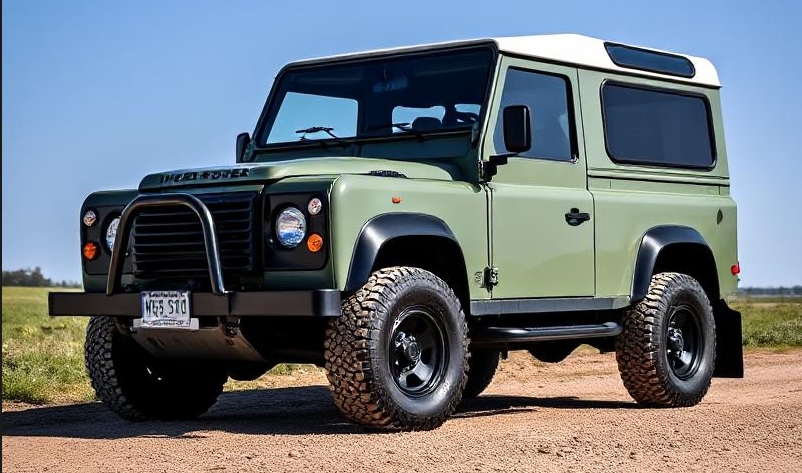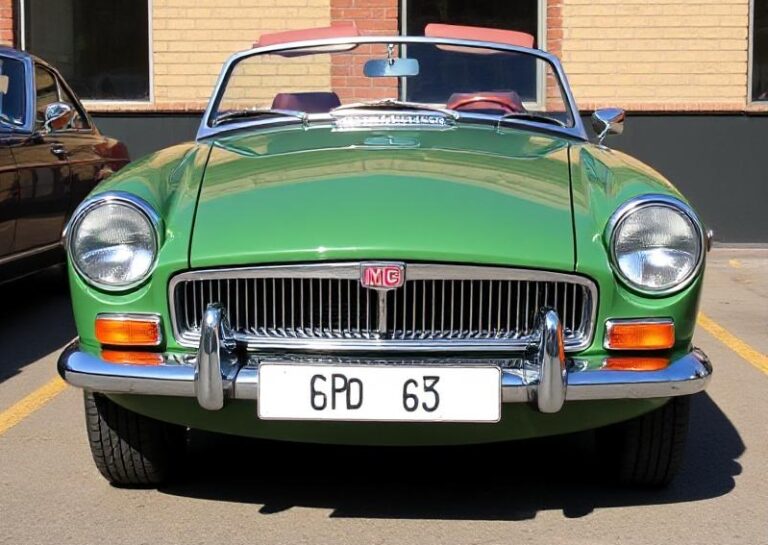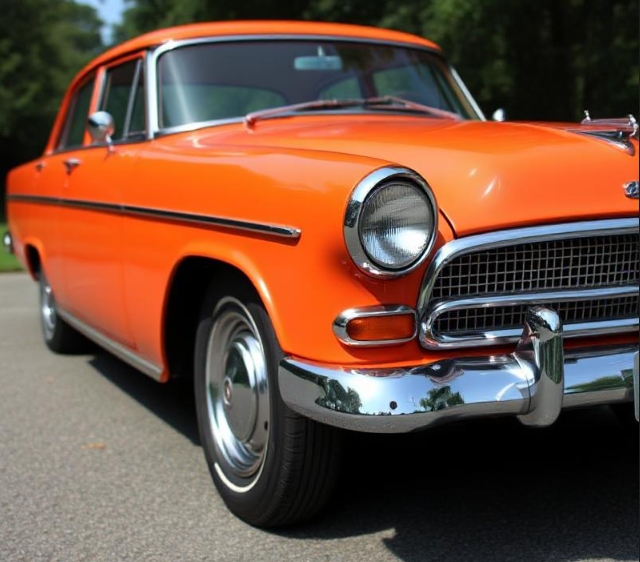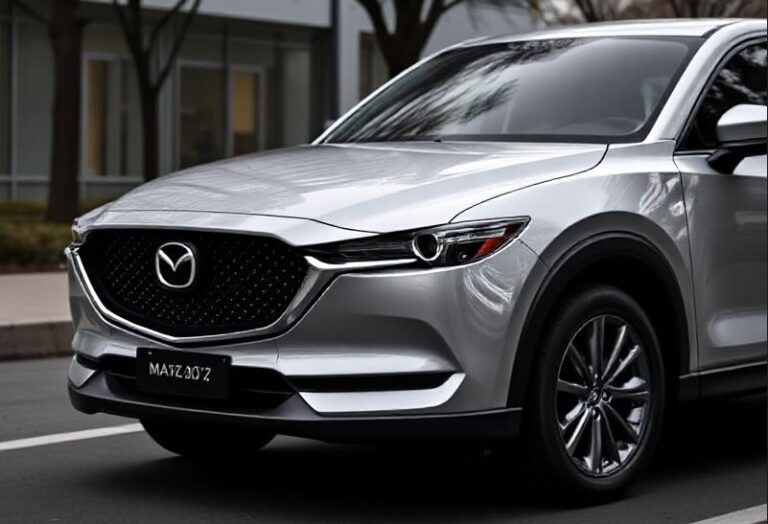The Evolution of the Land Rover Defender: An Icon of Off-Roading
The Land Rover Defender is an automotive icon and a hallmark of British engineering, celebrated for its distinctive design and unparalleled off-road capabilities. Over the years, it has evolved, adapting to modern standards while retaining its rugged charm. This article traces the history and evolution of the Land Rover Defender, highlighting key models, trim levels, and significant developments across different generations.
Origins: The Series I (1948)
The Land Rover’s lineage began in 1948 with the introduction of the Series I. Designed by Maurice Wilks, this vehicle embraced utilitarian functions while boasting off-road prowess. The original model was powered by a 1.6-liter engine and featured a lightweight aluminum body, making it perfect for agricultural work and military use. As the demand grew, the Series I underwent various modifications, which laid the groundwork for future models.
The Series II (1958-1971)
Launched in 1958, the Series II was a significant improvement over its predecessor, featuring wider tracks and more comfortable interiors. The engine also evolved, with a 2.25-liter petrol and diesel engine becoming standard. The Series II became synonymous with adventure, often seen in the hands of explorers and those drawn to the rugged outdoors.
Key Variants:
- Series IIa (1961-1971): This update brought minor styling changes and improved mechanics, including the introduction of a more robust suspension system.
The Series III (1971-1985)
The Series III was launched in 1971, continuing the legacy with enhanced features and a more modern design. This version introduced chemical-resistant vinyl seats, an improved dashboard, and an optional 2.5-liter diesel engine. With over 400,000 units produced, the Series III firmly established the Land Rover Defender in popular culture.
Key Variants:
- County (1979-1985): Focused on comfort and aesthetics, this trim featured enhanced interior materials, such as plush seating, offering a more refined experience.
The Birth of the Defender Name (1983)
In 1983, Land Rover rebranded its Series vehicles with the introduction of the Defender nameplate. The original Defender offered a range of configurations, including the 90 and 110 models, depending on wheelbase lengths. The Defender 90 featured a shorter, compact design (90 inches), while the Defender 110 provided additional passenger space with its extended 110-inch wheelbase. This era marked the beginning of a storied legacy for the Defender.
The Defender 90 and 110: Variants of Innovation
Mid-1980s to 1990s
The 1980s and 1990s saw the refinement of the Defender platform. The Defender became more user-friendly and pliable to the lifestyle-focused market, while still retaining its robust characteristics.
Key Features:
- Diesel Engines: The introduction of more efficient diesel engines aimed at reducing fuel consumption became popular, especially in global markets.
- Tdi and Td5 Engines: The 2.5L Tdi (Turbo Diesel Injection) and later the Td5 (Turbo Diesel 5-cylinder) became favorites due to their durability and ease of maintenance.
Trim Levels:
- Defender CSW (County Station Wagon): Emphasizing comfort with additional features for family-oriented buyers.
- Defender Hardtop: A more commercial variant with a cargo-friendly design for work and utilitarian purposes.
The New Millennium: Evolution and Innovations (2000-2016)
As the automotive landscape changed in the early 2000s, the Defender continued to evolve, incorporating modern technology and safety features. Despite its rugged heritage, the vehicle introduced more comfort-oriented design elements while keeping its legendary off-road capability.
Key Variants:
- Defender 90 and 110: The core models remained, but with new trims that included specialized options.
- Defender SVX: A special edition released in conjunction with the 60th anniversary of Land Rover, featuring bespoke aesthetic touches and enhanced off-road capabilities.
Technological Advancements:
- Introduction of Stability Control Systems: In the early 2000s, safety became paramount, leading to the inclusion of ABS braking and traction control systems.
- Air Conditioning and Modernized Interiors: Comfort features began to make their way into the Defender’s traditionally spartan interior.
The Last of the Classic Defender (2016)
2016 marked the final production year of the classic Defender, concluding a remarkable 68-year run. The last vehicles involved a limited run, with the Heritage Edition maintaining the nostalgic appeal that made the Defender such a beloved model.
Key Features:
- Heritage Edition: This version was reminiscent of the earlier models, with vintage style white roofs and a classic design that appealed to longtime fans.
The Launch of the New Defender (2020)
After a brief hiatus, the Land Rover Defender made its bold return in 2020, showcasing a radical redesign. The new model was introduced in two distinct wheelbase lengths: the Defender 90 and Defender 110. Devised for modern consumers, this new iteration combined technological advancements with a respect for its heritage.
Modern Features and Trim Levels:
- Engines: The new Defender features a range of engines, including a 2.0-liter turbocharged four-cylinder and a 3.0-liter inline-six with mild-hybrid capabilities.
- Trim Levels:
- Defender Base: The standard offering with essential features for pragmatic uses.
- Defender S, SE, HSE: Gradual upgrades that add comforts, advanced infotainment, and driver-assistance technologies.
- Defender X and X-Dynamic: Performance-oriented models that prioritize off-road enhancements and premium finishes.
Technological Integration:
- New Infotainment Systems: The new Defender is equipped with a state-of-the-art Pivi Pro infotainment system that supports over-the-air updates and smartphone integration.
- Advanced Interior Comfort: This model introduces enhanced seating and cargo solutions that appeal to urban customers while preserving its rugged roots.
.

.
Conclusion
The Land Rover Defender’s evolution showcases the brand’s ability to adapt to changing automotive landscapes while retaining the very essence of what makes it iconic: robustness, off-road capability, and a strong heritage. As it moves into the future, the Defender stands poised to navigate the complexities of modernity without losing its long-standing identity—a true testament to its legacy.
The Defender, in all its forms and models, continues to inspire off-road enthusiasts and urban adventurers alike, securing its place as a timeless emblem of adventure and exploration. As Land Rover embraces its storied heritage while innovating for the future, the Defender’s journey serves as a reminder of the spirit of exploration that lies at the heart of every Land Rover vehicle.







